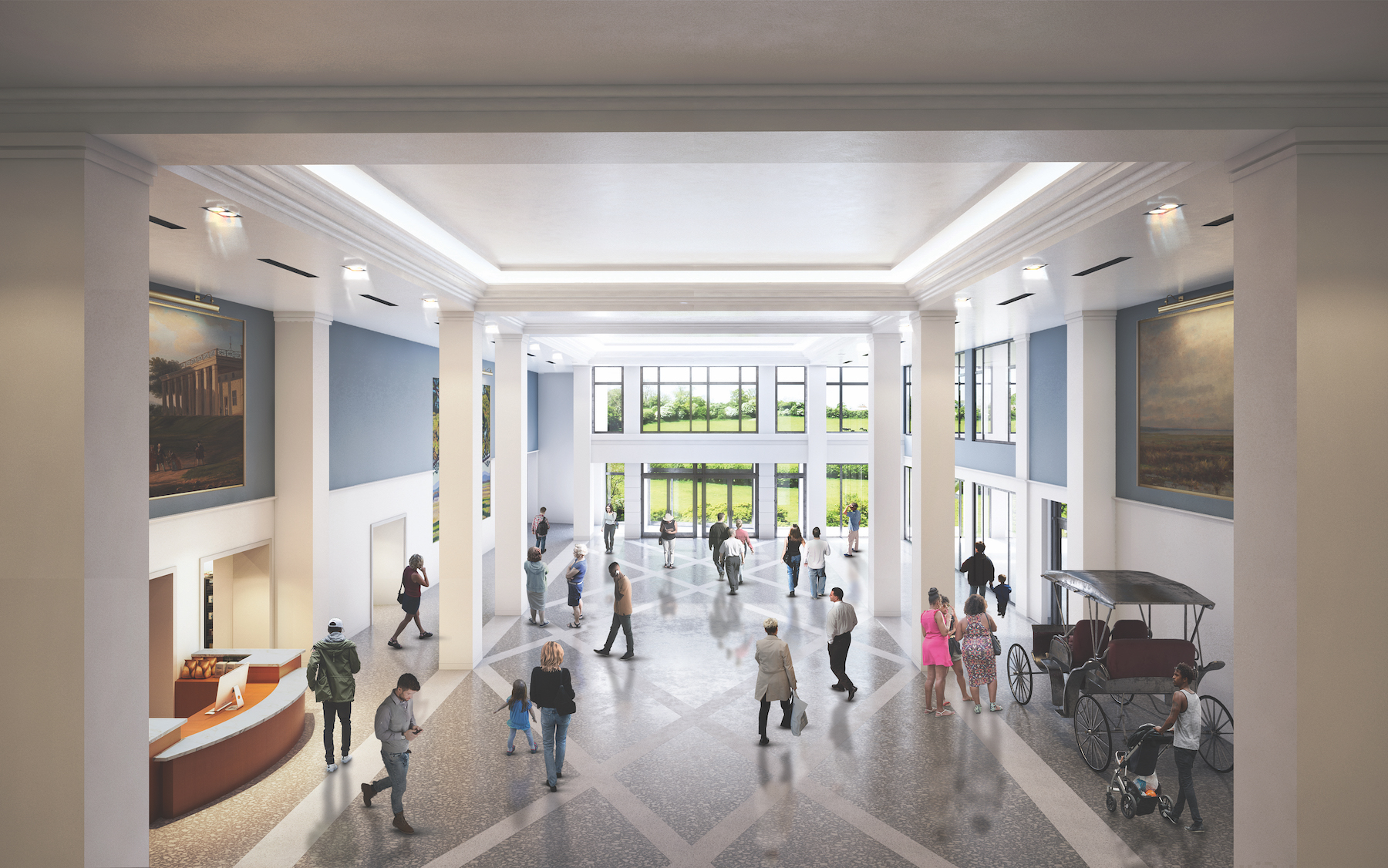The Virginia Historical Society is preparing to reopen its Virginia Museum of History & Culture, which has undergone an 18-month, $30 million-plus renovation that is the most extensive in the institution’s 200-year history.
The Museum, located in Richmond, is planning a grand reopening for the weekend of May 14 and 15, when it will officially unveil to the public a renovation that touches nearly two-thirds of the museum’s 250,000 sf. The project adds about 50 percent more exhibition space, a new research library, a grand two-story entrance atrium, an immersive orientation theater, several community meeting spaces, a connection between the Museum of History & Culture with the Virginia Museum of Fine Arts, an enhanced green space, and new amenities that include a café and museum store.
Glavé Holmes is the architect for this renovation, and Whiting-Turner Construction the GC. The PRD Group provided the exhibition design in partnership with the Museum’s internal curatorial staff.
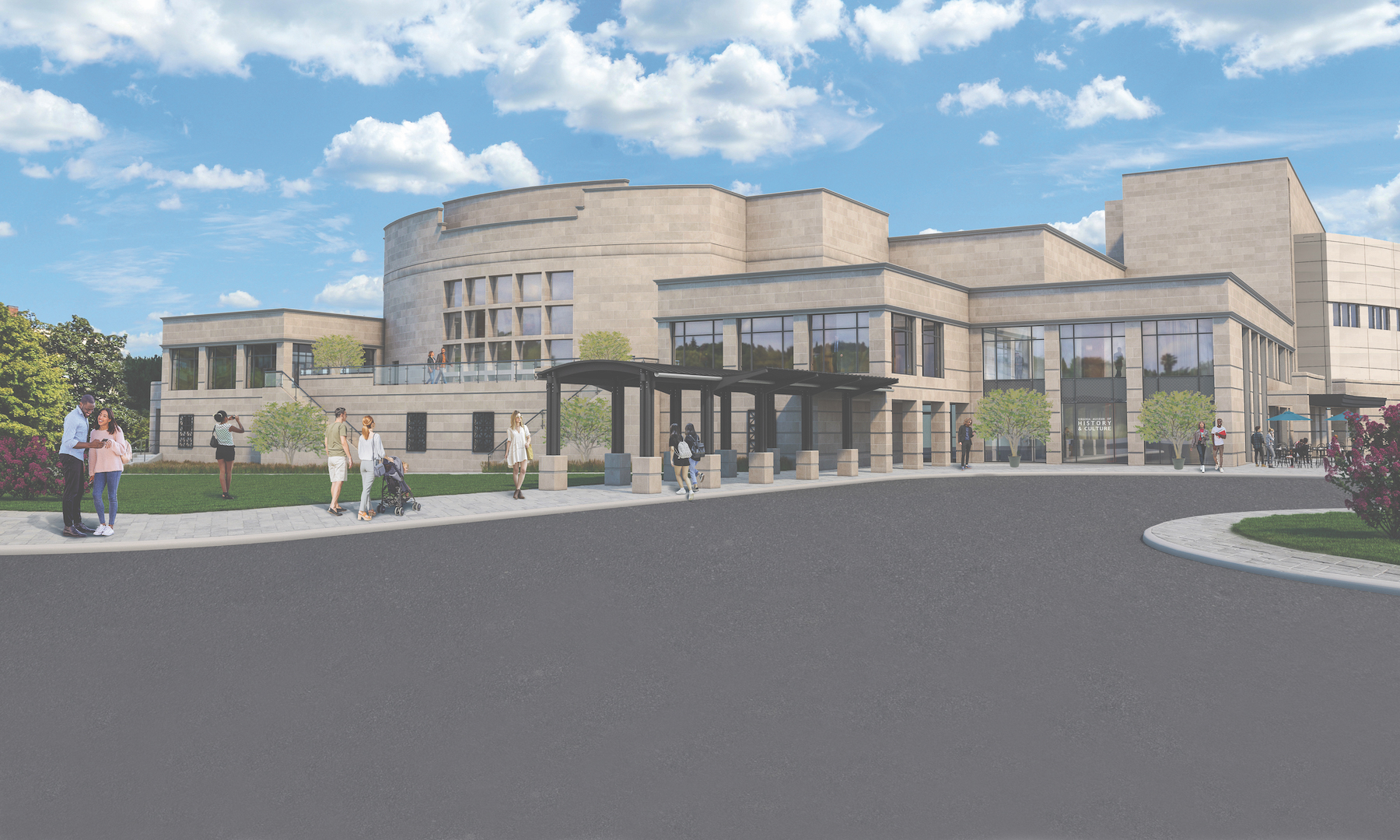
(The Virginia Museum of Fine Arts is also undergoing a $190 million renovation, designed by SmithGroup, that will impact 45,000 of the museum’s existing 650,000 sf of space, and include a new 100,000-sf wing and a 45,000-sf standalone Collections Center building. Construction is scheduled to start in the summer of 2023 for completion in the summer of 2025.)
Some of the Virginia Museum of History & Culture’s main goals from its renovation are to improve its infrastructure and programming, expand attendance by 25 percent, and extend the length of a guest’s visit by 50 percent.
VIRGINIA’S FIVE MAJOR REGIONS HIGHLIGHTED
As part of its reopening, the Museum of History & Culture—whose collection includes more than nine million objects—will debut exhibitions and galleries the present new approaches to learning. For example, Our Commonwealth, a more than 5,000-sf long-term exhibition with a 15-ft-wide video mural, will provide an in-depth, multi-sensory exploration through the five major regions of Virginia, featuring stories and artifacts from partner organizations and cultural institutions throughout the state. The exhibition will include living murals—large-scale, changing digital projections—and custom soundscapes that immerse them in the arts, culture, food, music, industry, and people of each region.
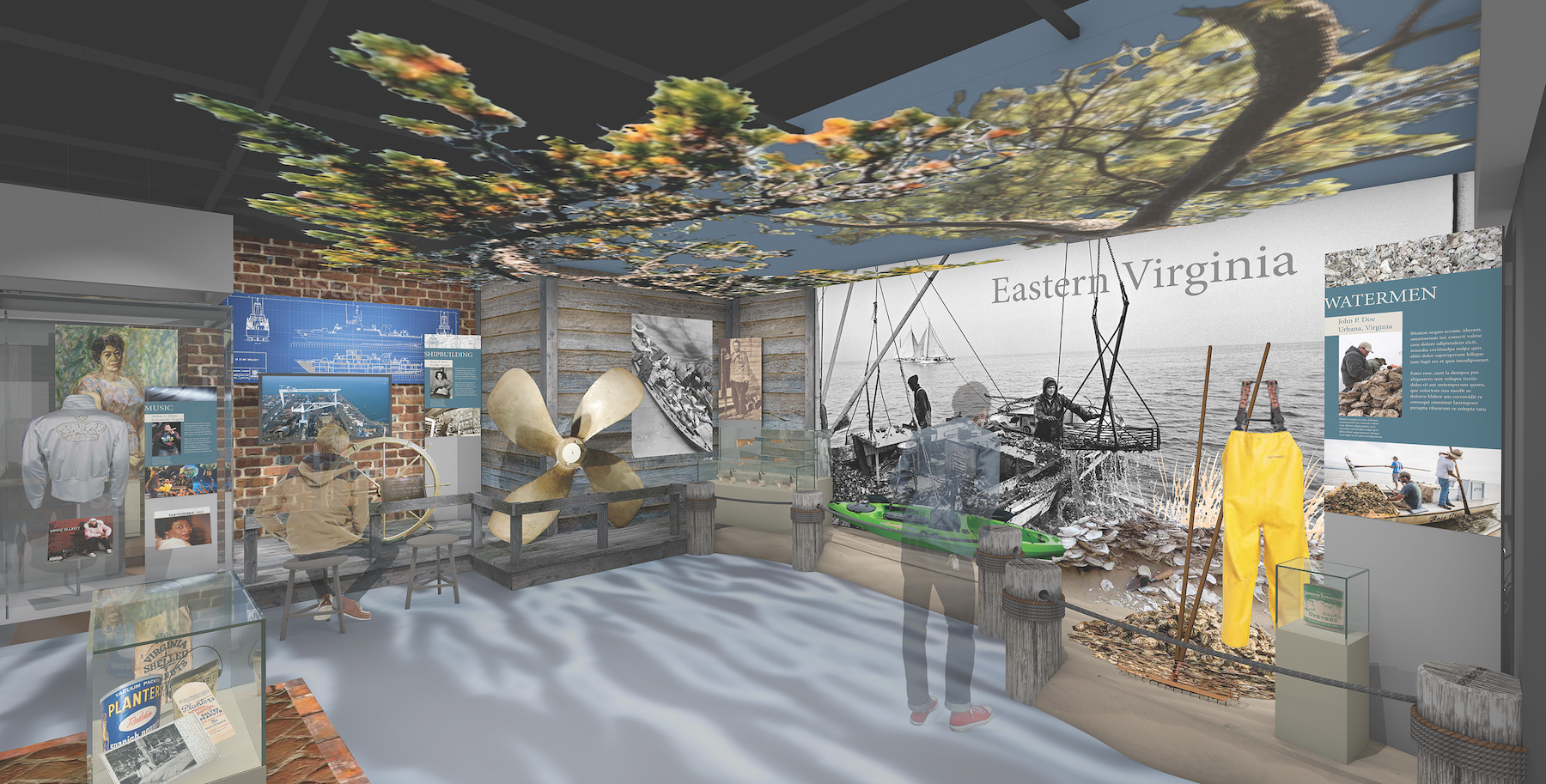
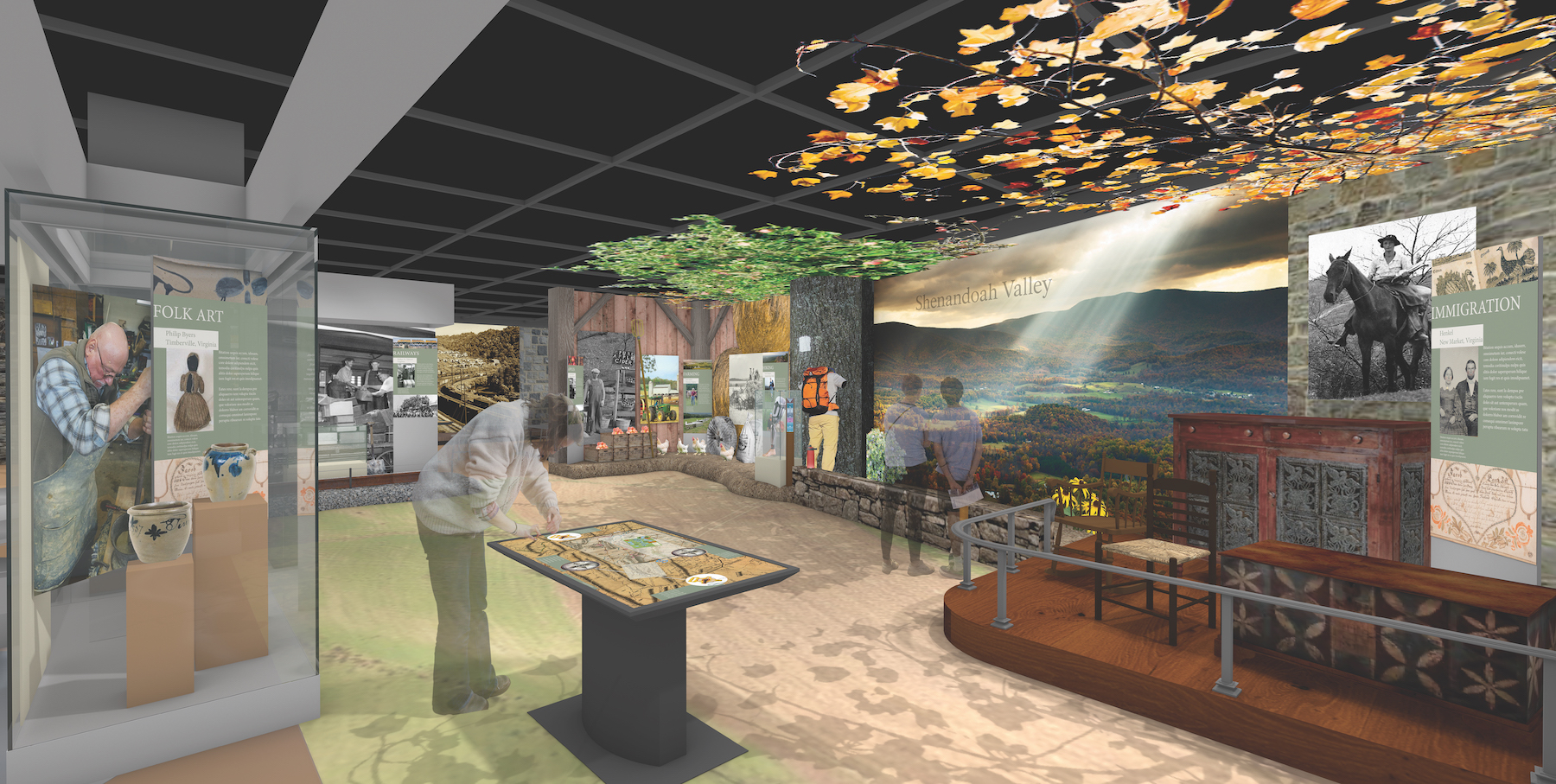
Other exhibits include American Democracy: A Great Leap of Faith, is a Smithsonian-organized display that will dynamically bring the great American experiment of democracy to life. Treasures of Virginia will feature objects associated with Virginians who, through extraordinary leadership and creativity, have worked to shape the future of both our state and our nation. Cheers, Virginia! explores alcohol crafting and consumption practices in Virginia across time. Virginia Explorers is a new interactive learning space for the museum’s youngest guests. The orientation theater will screen Imagine Virginia, a 17-minute film highlighting indelible moments and scenes in the state’s history. The film serves as an introduction to the reimagined museum.
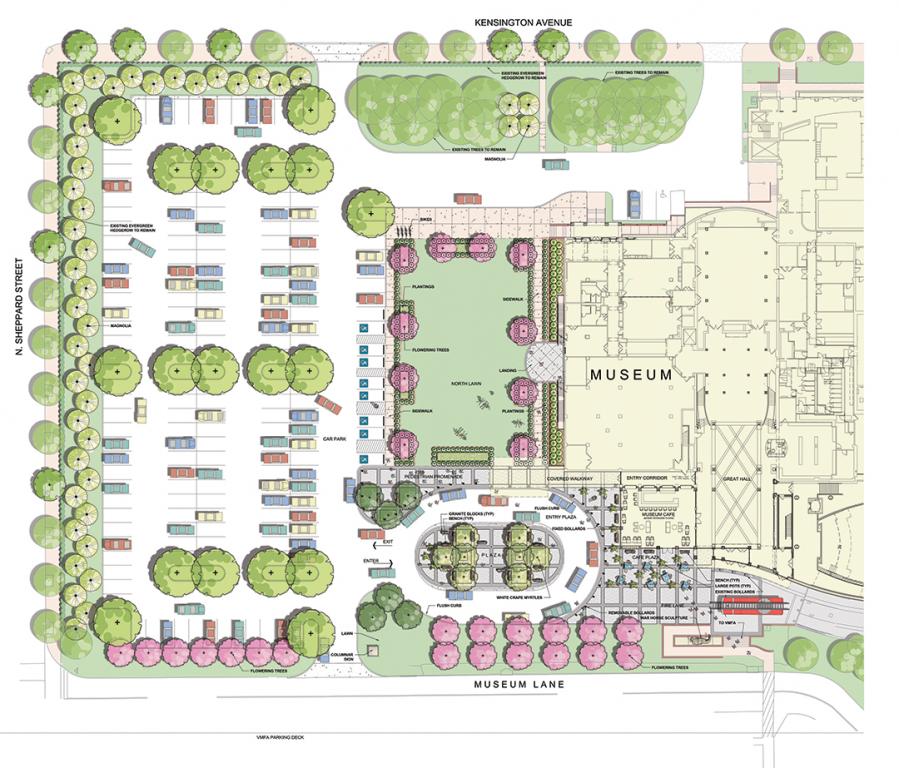
Beyond new physical spaces, the Museum is investing time and resources into a long-term collections partnership with the Black History Museum and Cultural Center of Virginia. In addition, the Museum is a key partner with educators across the state, enhancing the stories that can be told and supplementing the curricula that are pivotal for developing an informed citizenry.
Related Stories
| Aug 11, 2010
Museum celebrates African-American heritage
The Harvey B. Gantt Center for African-American Arts + Culture recently completed construction on the Wells Fargo Cultural Campus in Charlotte, N.C. Designed by the Freelon Group, Durham, N.C., with Batson-Cook's Atlanta office as project manager, the $18.8 million project achieved nearly 100% minority participation.
| Aug 11, 2010
Design for Miami Art Museum triples gallery space
Herzog & de Meuron has completed design development for the Miami Art Museum’s new complex, which will anchor the city’s 29-acre Museum Park, overlooking Biscayne Bay. At 120,000 sf with 32,000 sf of gallery space, the three-story museum will be three times larger than the current facility.
| Aug 11, 2010
Thom Mayne unveils ‘floating cube’ design for the Perot Museum of Nature and Science
Calling it a “living educational tool featuring architecture inspired by nature and science,” Pritzker Prize Laureate Thom Mayne unveiled the schematic designs and building model for the Perot Museum of Nature & Science at Victory Park in Dallas. The $185 million, 180,000-sf structure is 170 feet tall—equivalent to approximately 14 stories—and is conceived as a large...
| Aug 11, 2010
Piano's 'Flying Carpet'
Italian architect Renzo Piano refers to his $294 million, 264,000-sf Modern Wing of the Art Institute of Chicago as a “temple of light.” That's all well and good, but how did Piano and the engineers from London-based Arup create an almost entirely naturally lit interior while still protecting the priceless works of art in the Institute's third-floor galleries from dangerous ultravio...
| Aug 11, 2010
The Art of Reconstruction
The Old Patent Office Building in Washington, D.C., completed in 1867, houses two Smithsonian Institution museums—the National Portrait Gallery and the American Art Museum. Collections include portraits of all U.S. presidents, along with paintings, sculptures, prints, and drawings of numerous historic figures from American history, and the works of more than 7,000 American artists.
| Aug 11, 2010
Silver Award: Please Touch Museum at Memorial Hall Philadelphia, Pa.
Built in 1875 to serve as the art gallery for the Centennial International Exhibition in Fairmount Park, Memorial Hall stands as one of the great civic structures in Philadelphia. The neoclassical building, designed by Fairmount Park Commission engineer Hermann J. Schwarzmann, was one of the first buildings in America to be designed according to the principles of the Beaux Arts movement.


